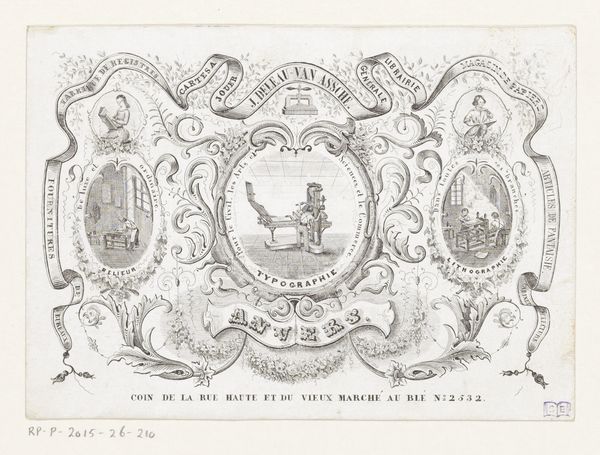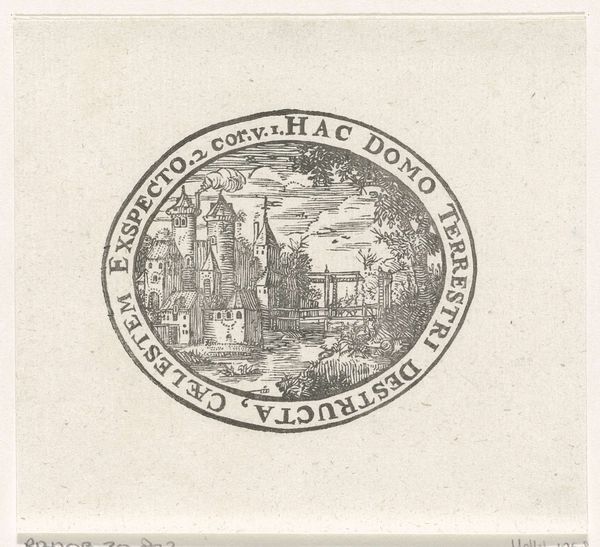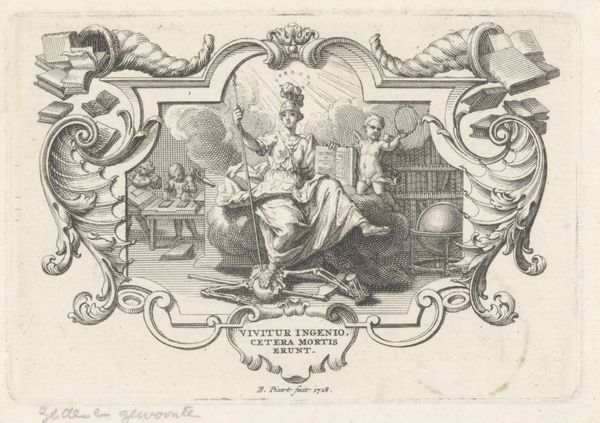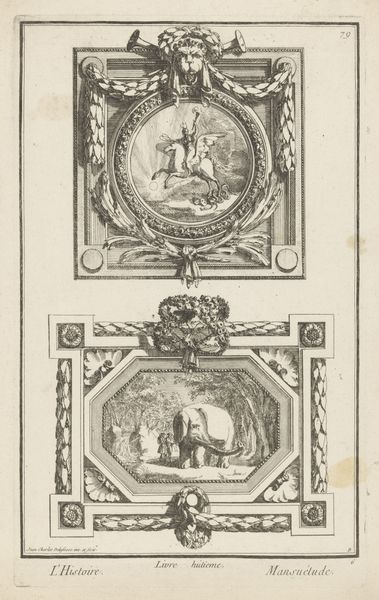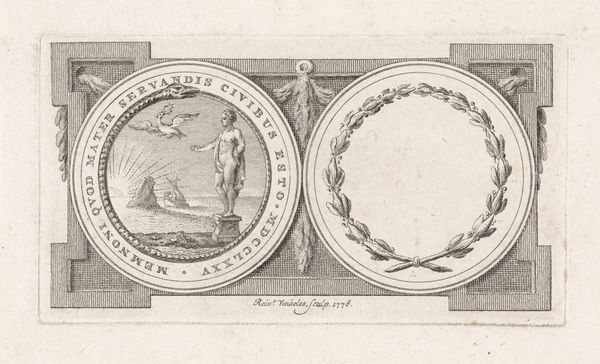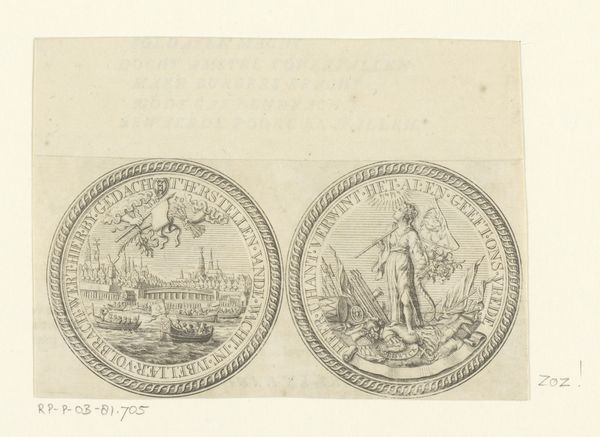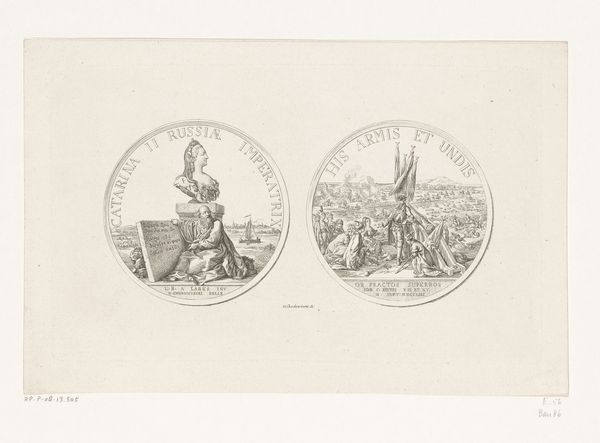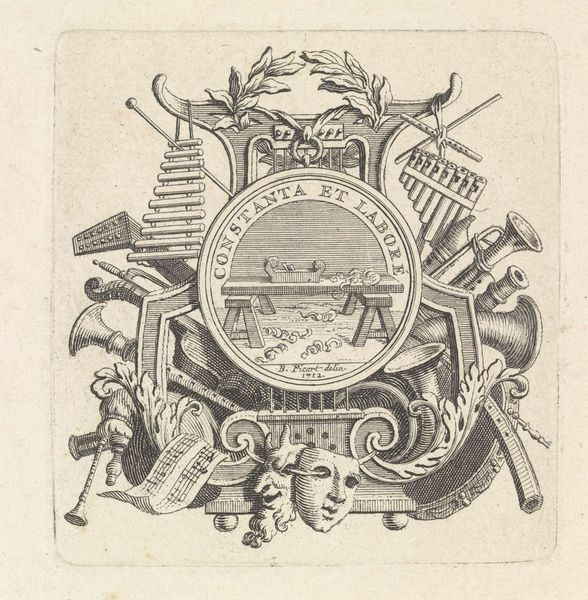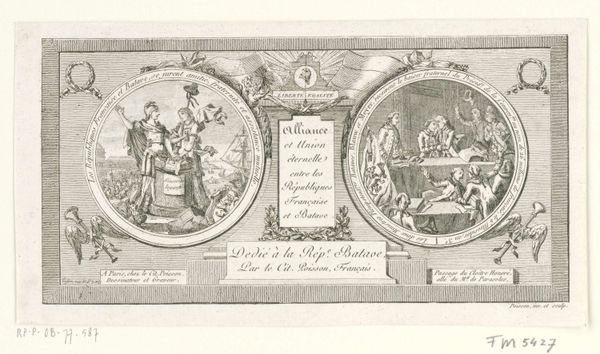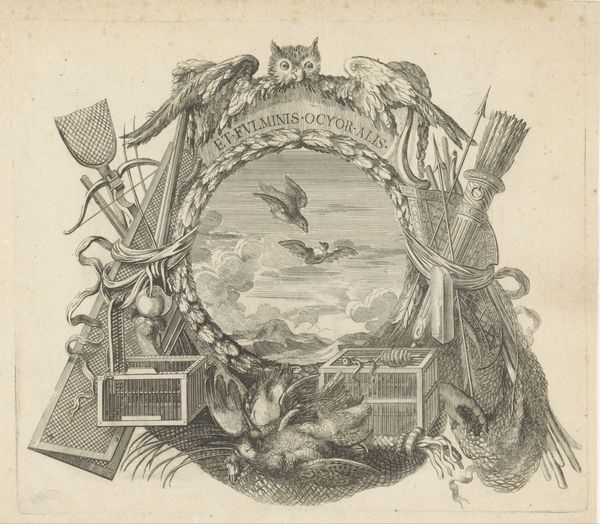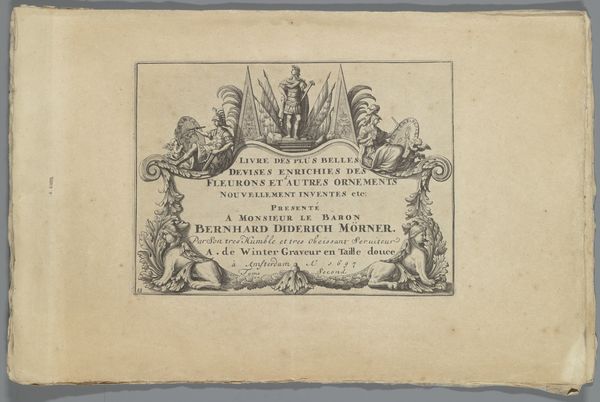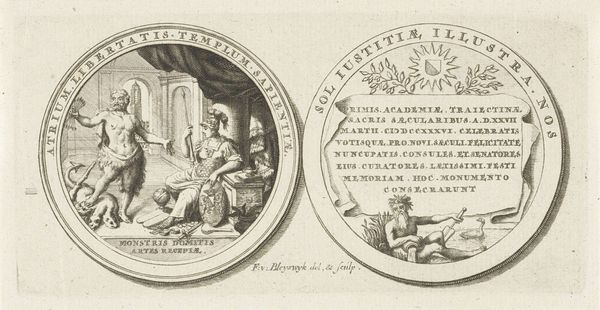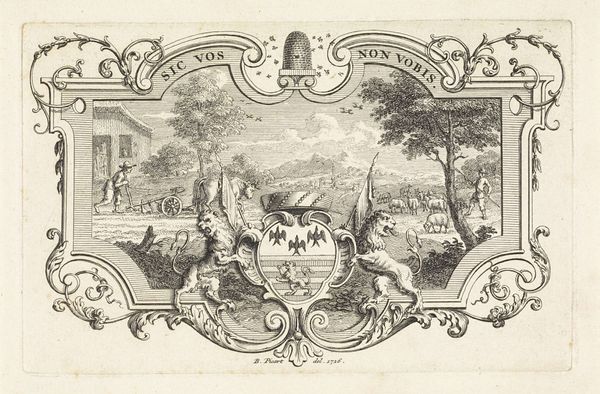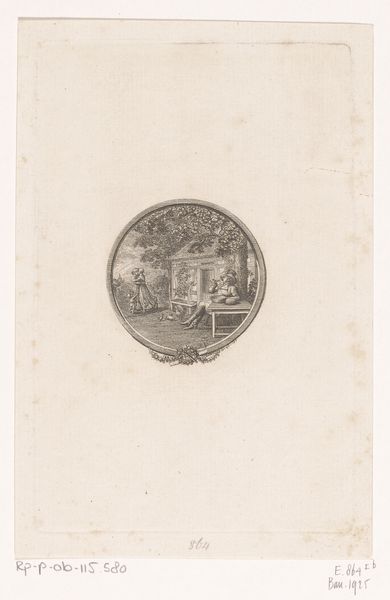
drawing, graphic-art, print, paper, ink, engraving
#
portrait
#
drawing
#
graphic-art
#
allegory
# print
#
pen sketch
#
pencil sketch
#
paper
#
ink
#
pen-ink sketch
#
symbolism
#
sketchbook drawing
#
history-painting
#
decorative-art
#
engraving
Dimensions: height 168 mm, width 246 mm
Copyright: Rijks Museum: Open Domain
Editor: This is "Allegorie ter ere van Antonie Grevenstuk" a drawing, engraving and print on paper, by Isaac Weissenbruch, dating from 1868 to 1912. It strikes me as a celebration, maybe even an idealized one. How do you interpret this work? Curator: I see it as a fascinating intersection of individual honour and broader societal values. Allegories, like this one, were often commissioned by or for institutions, right? Consider who Antonie Grevenstuk was and what values the client commissioning this piece sought to promote. It seems a work about honoring the individual's contribution, likely within the printing trade represented by that press in the centre. The inclusion of classical figures seems intended to ennoble that profession. Editor: So, it's about more than just Grevenstuk, it is about connecting him to broader ideals? Curator: Precisely. The artist draws parallels between Grevenstuk's work and a longer lineage of intellectual and industrious progress. Think about the deliberate placement of those figures – Minerva, with her spear and shield. Who is she protecting? What ideas or systems are being defended in this piece? Editor: Perhaps the printing trade and its role in spreading knowledge? But how does it all relate to contemporary conversations? Curator: It forces us to question: who gets remembered and how? Whose achievements are celebrated publicly, and whose contributions are erased? In this case, a man and a profession in the late 19th Century. But consider those who were excluded from this narrative—women, people of color, marginalized voices who were also essential to the functioning of that very same society. Understanding this context encourages a more critical reading. Editor: That makes sense. Seeing it that way helps contextualize the artwork historically but also invites a modern reassessment. I hadn't thought of it that way. Curator: Exactly, and recognizing those gaps in historical narratives makes us better equipped to question and construct more equitable ones today. We see that visual culture always embodies cultural ideology.
Comments
No comments
Be the first to comment and join the conversation on the ultimate creative platform.
